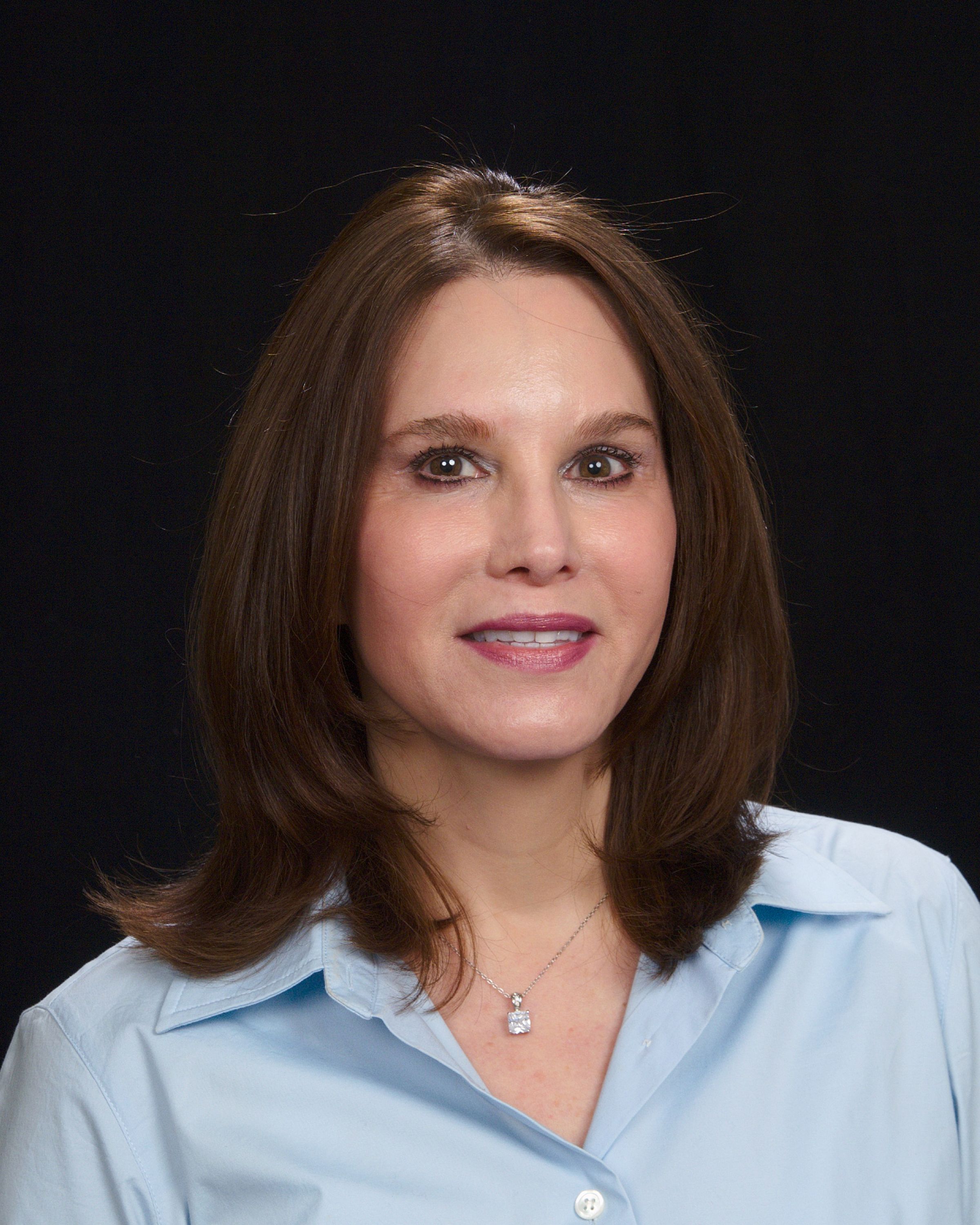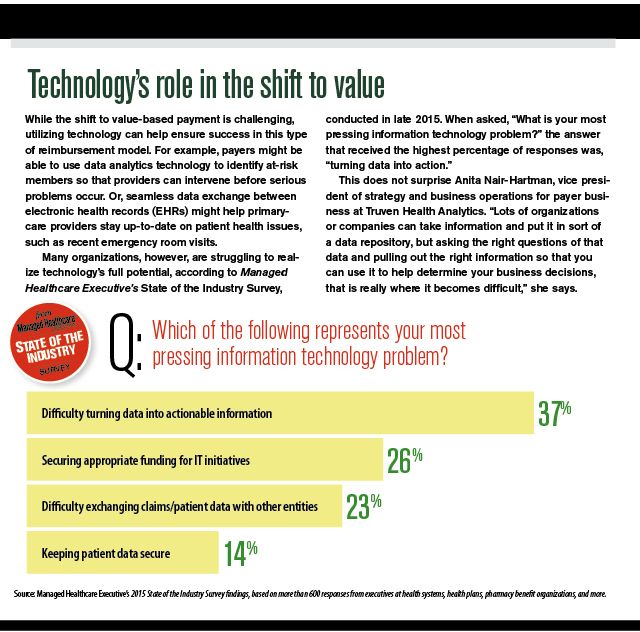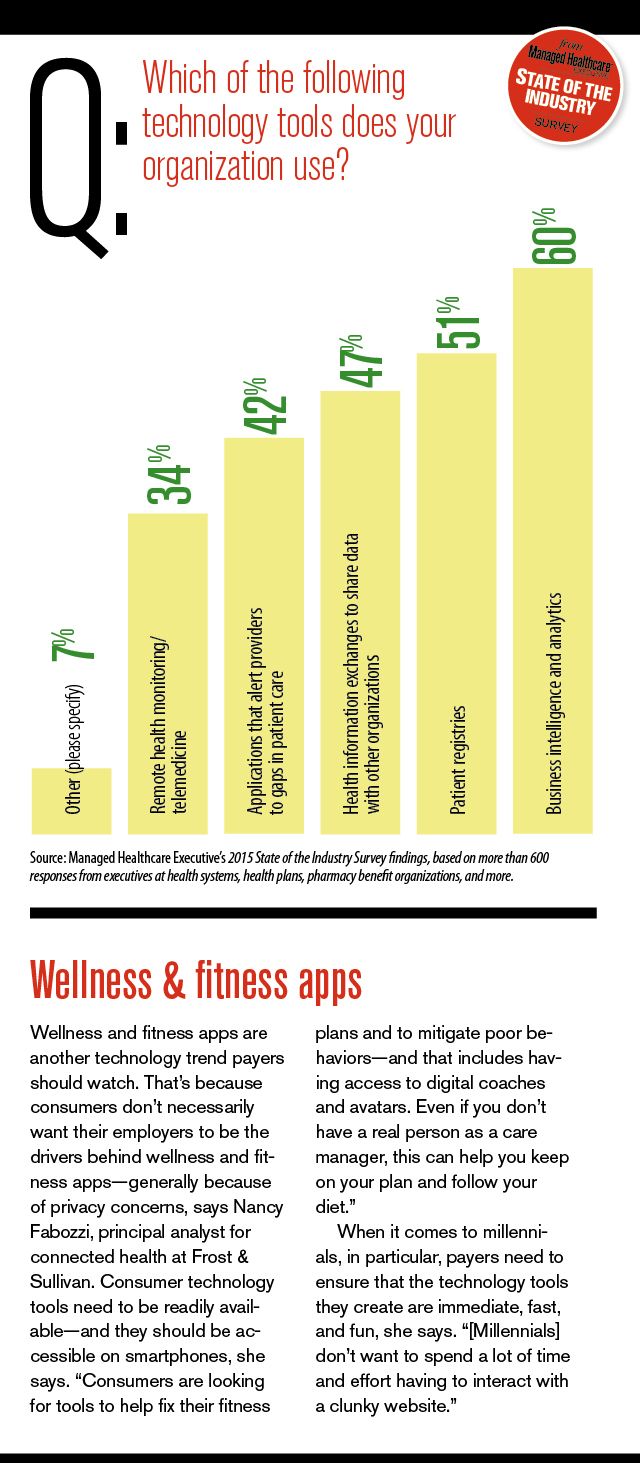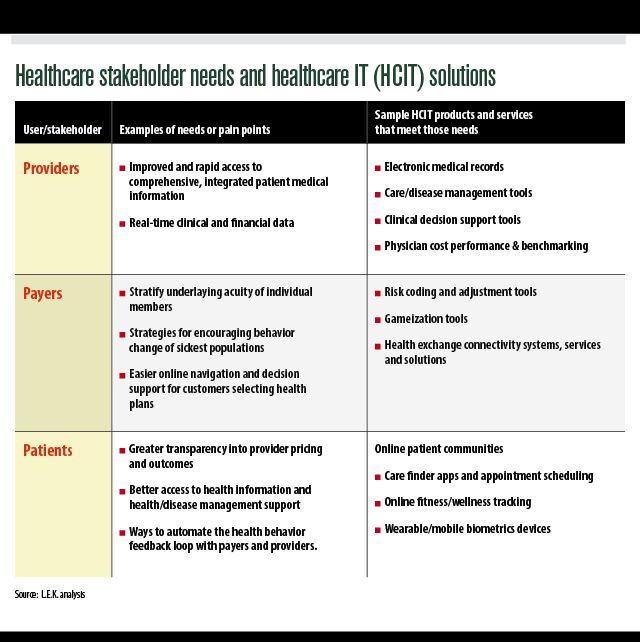Five tech trends that will change the healthcare industry
New technology is changing how payers, providers, and patients interact. Stay ahead of the curve by monitoring these technology changes.
In 2015, nearly 12 million consumers enrolled for insurance on the health insurance exchanges, according to the U.S. Department of Health and Human Services. That number is expected to grow to 29 million consumers in 2021, according to a PwC Health Research Institute report.

FabozziThis marks a huge shift in how payers sell their products, as historically, they have dealt primarily with brokers and employers, rather than directly with consumers. As payers deal with this change, technology will play an important role in forming a successful consumer-oriented strategy, says Nancy Fabozzi, principal analyst for connected health at Frost & Sullivan.
She notes that many consumers have never had to purchase insurance directly from insurance companies before. In addition, they need a better understanding of the ramifications of deductibles and copays as these costs continue to increase. “It’s very confusing for consumers to select plans and figure out the package of benefits and what they want to pay,” she says. “It’s not always a clear-cut tradeoff in terms of what you’re paying for and what you’re getting. Anything that helps people make those plan choices-even after they’ve selected their plan and need to make a decision about going out of network [will be helpful].”
That's why Fabozzi is particularly interested in technologies that help consumers make more educated purchasing decisions. She points to Healthcare.gov, which utilizes decision-support tools that help consumers determine which health plans provide coverage for their preferred providers and help them compare estimated out-of-pocket costs and total costs associated with the plans. Price transparency tools like this, especially mobile tools that help consumers figure out what a medication actually costs, are very important, says Fabozzi.
Payers looking for inspiration-and new leadership when it comes to forming a consumer-oriented strategy-should look to Amazon or Travelocity, says Fabozzi. “We’re hearing that more and more health plans are hiring people from Amazon and people with retail experience, because they need to understand what consumers want," she says. "Not just in the health plan sense, but generally what they want when they’re purchasing anything."
Here are four more technology trends to watch in 2016 and beyond:
Next: Trend #2
Information Exchange
With the move toward value-based care, payers and providers must work more closely together-and that makes the ability to exchange information even more important, says Josh Seidman, senior vice president at Avalere Health. “In organizations where this was somewhat further down their priority list, health information exchange is really rising to the top. That’s because you can’t manage a population of patients if you don’t know what’s going on with them.”

SeidmanFor example, providers participating in accountable care organizations (ACOs) need to know which patients are entering the hospital and when they’re being discharged and when they’re going to the emergency room. "Providers need to have this information in as close to real time as possible to know what’s happening with patients," says Seidman.
Fabozzi says all of the various tools involved in patient care-from the electronic health record (EHR) to digital health tools-should be able to exchange information seamlessly. “That’s the biggest gap: Connectivity among all of these systems,” she says.

Next: Trend #3
Remote monitoring
Eighty six percent of healthcare spending is focused on people with multiple chronic diseases such as diabetes, depression, and heart disease, according to the Agency for Healthcare Research and Quality. Technology that can help track patients' health information in between office visits is critical to better managing these patients, says Seidman.
“For example, I have a child with intermittent asthma, which is difficult with the pollen in the spring in D.C. It would be valuable if I had an easy way to report symptoms [such as wheezing], electronically, on an ongoing basis. We don’t have a good way right now of getting that structured data into [EHRs].”
Joseph Johnson, managing director and partner with L.E.K. Consulting, says telemedicine, remote monitoring, and pharmacy reconciliation and adherence tools can help payers and providers thrive as value-based reimbursement gains traction. Providers need the ability to stay in constant contact with their most vulnerable patients-they can’t wait for them to show up in the emergency room, he says. “Tools to help coordinate care are helping [to avoid] some of the breakdowns in those silos that might have occurred in the past."
Remote monitoring tools can also help detect ambulation and a senior patient's ability to perform certain functions-such as the length of time it takes to stand up or sit down or answer the doorbell when it rings, says Johnson. “These real-time tracking tools are a great way for care providers to keep an eye on the maintenance of [a senior’s] chronic conditions and to make sure that the senior on the other end is stable ... before they decline or deteriorate in terms of their condition and they show up in the emergency room.”
Remote tracking tools can also help address patient safety issues. “In particular with the elderly, you want to make sure that the risk of falling is not increasing or their ability to walk around freely is not degenerating,” says Johnson. “Tools like that hold a lot of promise to continue to serve this trend of [seniors] wanting to age in place.”

Next: Trend #4
Analytics platforms
Seventy five percent of hospitals have adopted EHRs-up from 59% in 2013, according to a 2015 Health Affairs article. But that doesn’t mean providers can access data in a format that’s usable for population health management, says Seidman. Payers and providers need tools that access and analyze the data found in EHRs and in claims data to effectively to figure out which patients are most in need and then reach out to those patients and apply the appropriate resources.
Analytics tools that help with population management, clinical decision support, and predictive analytics hold huge potential for a step change in drawing increasingly data-driven insights across patient populations, says Johnson. The analysis of real-time clinical and financial information can ultimately help with decision support at the point of care, though those capabilities are still evolving and, he says, are best described as “a bit more nascent.”
“Payers are sitting on a wealth of data, but they need to be able to share that information with providers to enable population health management,” says Johnson, who says outcome measures and tracking tools as important.

Next: Trend #5
Patient portals
A patient portal is a secure online website that gives patients access to personal health information, such as prescription information and lab results, from anywhere with an Internet connection. Portals can also offer features such as digital coaches and medical content. For example, tips on best practices for managing heart disease or depression. As a result, patient portals can increase patient engagement in their own healthcare, which could improve patient outcomes and reduce costs.
In order for patient portals to be successful, however, they need to be mobile and aggregate data across all of a patient’s providers, says Fabozzi. Take, for example, an elderly patient. That patient is not going to log in and out of five different portals for each of their doctors to get an electronic snapshot of their health, she says. Since health plans have all the data for payments made to providers, they can help provide a seamless patient portal experience for consumers, says Fabozzi. Today, both payers and providers develop patient portals for patients to access their online health information. In the future, she says payers and providers will work together to feed data in to a single patient portal for consumers. Providers have been motivated to develop patient portals by meaningful use incentives, whereas payers will be motivated by the need to engage with patients-and this will particularly be the case as more consumers head to the insurance exchanges to purchase plans directly from payers, she says.
Johnson agrees that patient portals are a “tough nut to crack.” Still he says patient portals can aggregate and track medical information for individual patients, and provide online communities to help patients with chronic conditions-and, in some cases, get real-time support from clinicians. To get patients to engage with portals, he suggests incentives, gamification, or points-and-rewards systems.
Next: Challenges and risks
Challenges and risks
In order to be successful with these new technologies, payers and providers must understand that technology is an enabler-it’s not “the end all be all,” says Johnson. That means managed care organizations need to first change their current work flows and processes, rethink how they want to operate in the future, and then wrap the technology around that, he advises.
Some of the issues that might raise problems for payers and providers during the transition to these new technologies include capital constraints, the need for rapid feedback, and physician adoption. As a result, pilot testing new technologies is a good idea, says Johnson. “This approach allows you to see how the technology works in a real-world setting, while doing an analysis of whether the investment makes sense."
Aine Cryts is a writer based in Boston.
In the Scope of Virtual Health and the Future of “Website” Manner, Per Ateev Mehrotra
August 10th 2023Briana Contreras, an editor of Managed Healthcare Executive, had the pleasure of catching up with MHE Editorial Advisory Board Member, Ateev Mehrotra, MD, MPH, who is a professor of healthcare policy at Harvard Medical School and an Associate Professor of Medicine and Hospitalist at Beth Israel Deaconess Medical Center.
Listen
Extending the Capabilities of the EHR Through Automation
August 2nd 2023Welcome back to another episode of "Tuning In to the C-Suite," where Briana Contreras, an editor of Managed Healthcare Executive, had the pleasure of chatting with Cindy Gaines, chief clinical transformation officer at Lumeon.
Listen